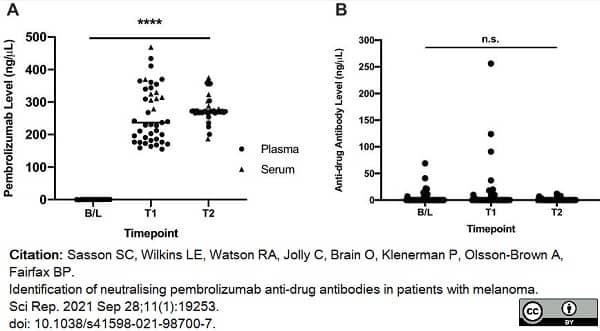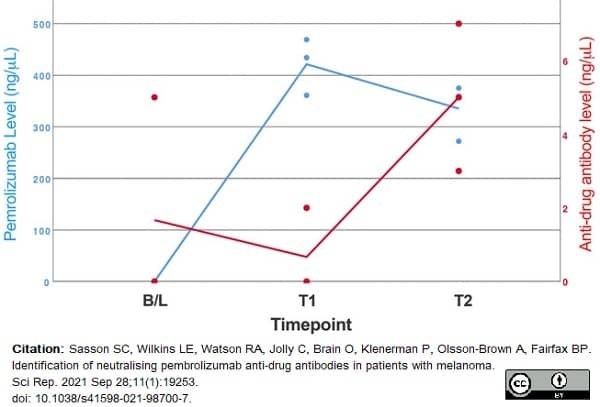- Reagents In The Kit
-
LNK002P: 3 Vials of 100ug LYNX lyophilized HRP mix
1 Vial LYNX Modifier reagent
1 Vial LYNX Quencher reagent
-
LNK006P: 3 Vials of 10μg LYNX lyophilized HRP mix
1 Vial LYNX Modifier reagent
1 Vial LYNX Quencher reagent
-
LNK005P: 1 Vial of 5mg LYNX lyophilized HRP mix
1 Vial LYNX Modifier reagent
1 Vial LYNX Quencher reagent
-
LNK004P: 5 Vials of 1mg LYNX lyophilized HRP mix
1 Vial LYNX Modifier reagent
1 Vial LYNX Quencher reagent
-
LNK003P: 1 Vial of 1mg LYNX lyophilized HRP mix
1 Vial LYNX Modifier reagent
1 Vial LYNX Quencher reagent
-
LNK001P: 1 Vial of 100μg LYNX lyophilized HRP mix
1 Vial LYNX Modifier reagent
1 Vial LYNX Quencher reagent
- Preparing The Antibody
-
LNK002P: The following buffer solutions are recommended for preparing the antibody:
10-50mM amine-free buffer (e.g HEPES, MES, MOPS and phosphate) pH range 6.5-8.5, although moderate concentrations of Tris buffer (<20mM) may be tolerated.
If possible, avoid buffers containing nucleophilic components such as primary amines and thiols (e.g. thiomersal/thimerosal) since they may react with LYNX chemicals. EDTA and common non-buffering salts and sugars have little or no effect on conjugation efficiency.
Sodium azide is an irreversible inhibitor of HRP and therefore should be avoided.
The amount of antibody used for labeling ideally should correspond to molar ratios between 1:4 and 1:1 Ab to HRP. Taking account of the molecular weights (160,000 versus 40,000), this means for that for 100μg HRP you need to add between 100-400μg of antibody. For optimal results the antibody volume should be up to 100μl, at a concentration range of 0.5-5.0mg/ml.
-
LNK006P: The following buffer solutions are recommended for preparing the antibody:
10-50mM amine-free buffer (e.g HEPES, MES, MOPS and phosphate) pH range 6.5-8.5, although moderate concentrations of Tris buffer (<20mM) may be tolerated.
If possible, avoid buffers containing nucleophilic components such as primary amines and thiols (e.g. thiomersal/thimerosal) since they may react with LYNX chemicals. EDTA and common non-buffering salts and sugars have little or no effect on conjugation efficiency.
Sodium azide is an irreversible inhibitor of HRP and therefore should be avoided.
The amount of antibody used for labeling ideally should correspond to molar ratios between 1:4 and 1:1 Ab to HRP. Taking account of the molecular weights (160,000 versus 40,000), this means for that for 10μg HRP you need to add between 10-40μg of antibody. For optimal results the antibody volume should be up to 10μl, at a concentration range of 0.5-5.0mg/ml.
-
LNK005P: The following buffer solutions are recommended for preparing the antibody:
10-50mM amine-free buffer (e.g HEPES, MES, MOPS and phosphate) pH range 6.5-8.5, although moderate concentrations of Tris buffer (<20mM) may be tolerated.
If possible, avoid buffers containing nucleophilic components such as primary amines and thiols (e.g. thiomersal/thimerosal) since they may react with LYNX chemicals. EDTA and common non-buffering salts and sugars have little or no effect on conjugation efficiency.
Sodium azide is an irreversible inhibitor of HRP and therefore should be avoided.
The amount of antibody used for labeling ideally should correspond to molar ratios between 1:4 and 1:1 Ab to HRP. Taking account of the molecular weights (160,000 versus 40,000), this means for that for 5mg HRP you need to add between 5-20mg of antibody. For optimal results the antibody volume should be up to 5ml, at a concentration range of 0.5-5.0mg/ml.
-
LNK004P: The following buffer solutions are recommended for preparing the antibody:
10-50mM amine-free buffer (e.g HEPES, MES, MOPS and phosphate) pH range 6.5-8.5, although moderate concentrations of Tris buffer (<20mM) may be tolerated.
If possible, avoid buffers containing nucleophilic components such as primary amines and thiols (e.g. thiomersal/thimerosal) since they may react with LYNX chemicals. EDTA and common non-buffering salts and sugars have little or no effect on conjugation efficiency.
Sodium azide is an irreversible inhibitor of HRP and therefore should be avoided.
The amount of antibody used for labeling ideally should correspond to molar ratios between 1:4 and 1:1 Ab to HRP. Taking account of the molecular weights (160,000 versus 40,000), this means for that for 4mg HRP you need to add between 1-4mg of antibody. For optimal results the antibody volume should be up to 1ml, at a concentration range of 0.5-5.0mg/ml.
-
LNK003P: The following buffer solutions are recommended for preparing the antibody:
10-50mM amine-free buffer (e.g HEPES, MES, MOPS and phosphate) pH range 6.5-8.5, although moderate concentrations of Tris buffer (<20mM) may be tolerated.
If possible, avoid buffers containing nucleophilic components such as primary amines and thiols (e.g. thiomersal/thimerosal) since they may react with LYNX chemicals. EDTA and common non-buffering salts and sugars have little or no effect on conjugation efficiency.
Sodium azide is an irreversible inhibitor of HRP and therefore should be avoided.
The amount of antibody used for labeling ideally should correspond to molar ratios between 1:4 and 1:1 Ab to HRP. Taking account of the molecular weights (160,000 versus 40,000), this means for that for 1mg HRP you need to add between 1-4mg of antibody.. For optimal results the antibody volume should be up to 1ml, at a concentration range of 0.5-5.0mg/ml.
-
LNK001P: The following buffer solutions are recommended for preparing the antibody:
10-50mM amine-free buffer (e.g HEPES, MES, MOPS and phosphate) pH range 6.5-8.5, although moderate concentrations of Tris buffer (<20mM) may be tolerated.
If possible, avoid buffers containing nucleophilic components such as primary amines and thiols (e.g. thiomersal/thimerosal) since they may react with LYNX chemicals. EDTA and common non-buffering salts and sugars have little or no effect on conjugation efficiency.
Sodium azide is an irreversible inhibitor of HRP and therefore should be avoided.
The amount of antibody used for labeling ideally should correspond to molar ratios between 1:4 and 1:1 Ab to HRP. Taking account of the molecular weights (160,000 versus 40,000), this means for that for 100μg HRP you need to add between 100-400μg of antibody. For optimal results the antibody volume should be up to 100μl, at a concentration range of 0.5-5.0mg/ml.
- Regulatory
- For research purposes only
- Guarantee
- 12 months from date of despatch
- Licensed Use
- These products and the methodology of conjugation are patent protected under United Kingdom patent number 2446088 and associated international patent applications. The purchase of this product conveys to the buyer the limited, non exclusive non-transferable right (without the right to resell repackage or further sublicense) under these patents to use the product to make conjugates for research and development purposes only. The purchaser cannot sell or otherwise transfer this product, or its components, or materials or data made using this product, or its components to a third party. Further information on purchasing licenses for diagnostic and other uses may be obtained by contacting Bio-Rad, at. Endeavour House, Langford Business Park, Langford Lane, Kidlington, Oxon. OX5 1GE UNITED KINGDOM. Tel: +44 1865 852 700. E-mail: antibodies@bio-rad.com



